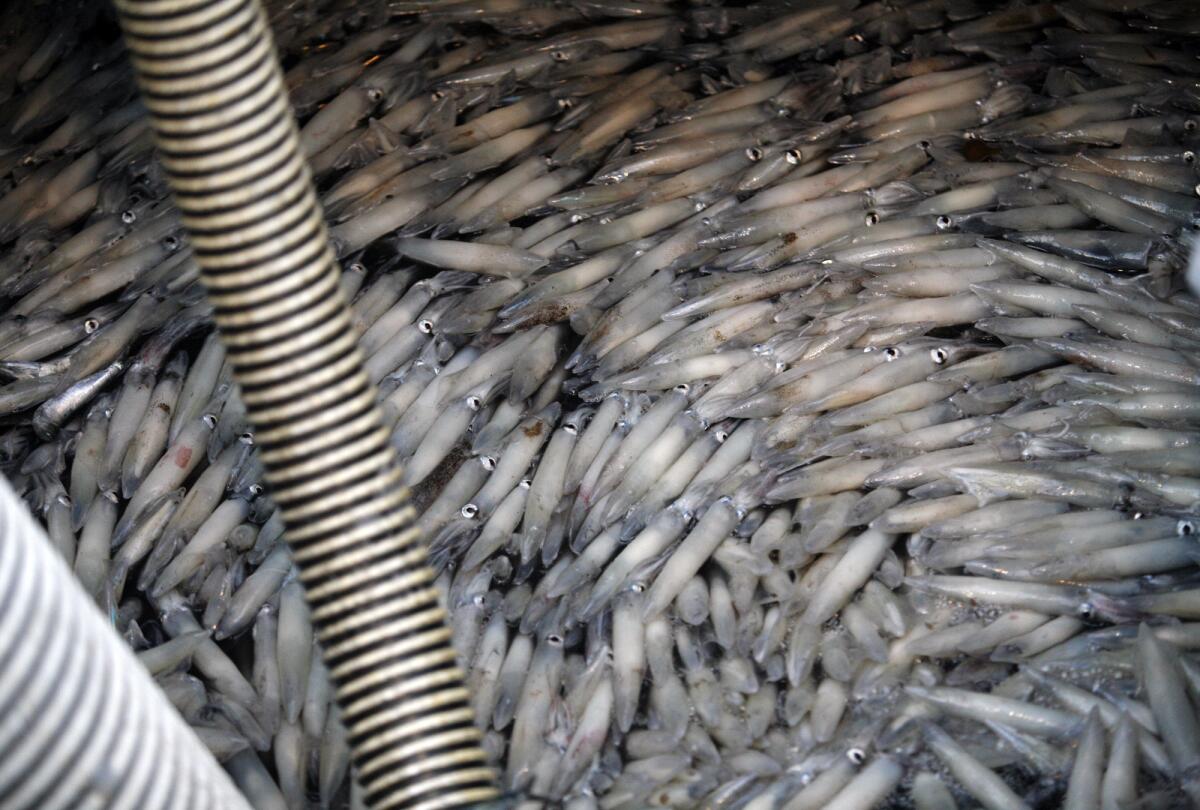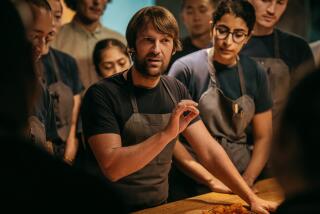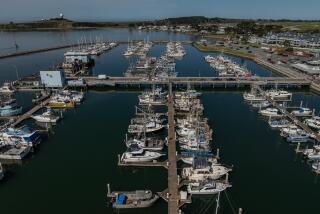Having our seafood and eating it too, with âAmerican Catchâ

More than 90% of the seafood we eat in the United States is imported -- typically cheap farmed tilapia, salmon and shrimp. Almost one-third of the fish we catch here is exported -- mostly high-value wild species.
If those statistics make you scratch your head, youâre not alone. Thatâs the paradox that led Paul Greenberg to write his new book âAmerican Catch,â which argues that if we better appreciated what our local waters can give us (preferably on a plate), then we might take better care of them.
In Greenbergâs first book, the quite wonderful âFour Fish,â he used four iconic species to explain the complexities of our seafood. In his new book, he takes a similar approach, but this time focuses on the relationship between the fish we eat and the deteriorating coastal environment where they live.
âItâs a little bit of an attenuated argument and I realize that,â Greenberg says. âBut I also think that if we donât have a feedback loop that tells us âHey, these fish we love are disappearing and if we donât take care of the ocean we wonât have them,â then weâre just going to keep up this open-ended exploitation of the environment. We need to have this feedback loop to alert us that our food security is being compromised.â
If this makes it sound like âAmerican Catchâ is another of those dry, haranguing issue-driven books that you read mostly out of obligation, you neednât worry. While Greenberg has a firm grasp of the facts, he also has a storytellerâs knack for framing them in an entertaining way.
He starts with eastern oysters, once so plentiful in the waters around New York City but now almost vanished (he finds a group trying, with very limited success, to revive them, and even, in an act of either blind passion or utter heroism, eats one).
Hereâs the thing about oysters -- theyâre not only delicious, but theyâre incredibly efficient at removing impurities from the water; and even beyond that, their reefs help absorb storm surge like the one from Hurricane Sandy that devastated the New York area.
Shrimp, once one of the great wild fisheries of the Gulf of Mexico, are now being undone by cheap farmed product from Southeast Asia. But many of those farms were created by destroying ecologically valuable mangrove forests. Meanwhile, a generations-old resource of our own is disappearing.
Itâs not all doom and gloom. The final chapter details how a coalition of Native Americans, environmentalists and fishermen have -- at least so far -- fought back the billion-dollar Pebble Mine project that could have devastated one of the most abundant wild salmon runs in Alaska.
Greenberg acknowledges that heâs making a complicated argument. One could suggest that itâs more beneficial for those embattled American fishing families to be able to sell their catch at the highest possible price, no matter where the buyer lives.
âThat argument can certainly be made,â Greenberg says. âBut on the other hand, in general, we Americans have done a very good job of protecting our coastal resources -- particularly when you compare it to some other countries -- and thereâs also something to be said for the fish caught in those waters going to the people who have jurisdiction over the fish. We have put in place all of these environmental laws to protect the fish, we should be able to enjoy them.
âAll things considered, we do have a very good environmental record when it comes to preserving our fisheries and I think thereâs something to be said for embracing that and making that part of our national identity. That we embrace these great fisheries and we eat this great fish.â
Of course, a big part of the solution to the problem is getting Americans to eat more different types of fish. Right now, we seem to be stuck on just a few, generally top-of-the-food-chain species -- particularly salmon and tuna.
âThatâs the whole problem,â Greenberg says. âAmericans are scared of cooking something different. But if they did, a lot of the so-called seafood deficit would be gone. I think we produce enough seafood in this country to meet demand if we would just take advantage.
âThe idea strikes me, you know how the USDA has the food pyramid of what we should be eating? What we really need is a seafood pyramid that demonstrates how we can eat from the ocean. At the base would be oysters, mussels, farmed clams, edible kelps and seaweeds that actually help make the water cleaner and that are so plentiful we can eat as much as we want.
âWe need to boost our consumption of those filter-feeders, then we could increase our consumption of other species. I still wouldnât be crazy about eating those big predators we love so much, but we could have them occasionally and enjoy them.â
As for specific recommendations for Southern California, Greenberg suggests seeking out local fish such as sand dabs, sculpins, mackerel and particularly bottom-of-the-food-chain species such as sardines and squid.
âEat the bait, thatâs my slogan for 2014,â he laughs.
Are you a food geek? Follow me on Twitter @russ_parsons1.
More to Read
Eat your way across L.A.
Get our weekly Tasting Notes newsletter for reviews, news and more.
You may occasionally receive promotional content from the Los Angeles Times.











